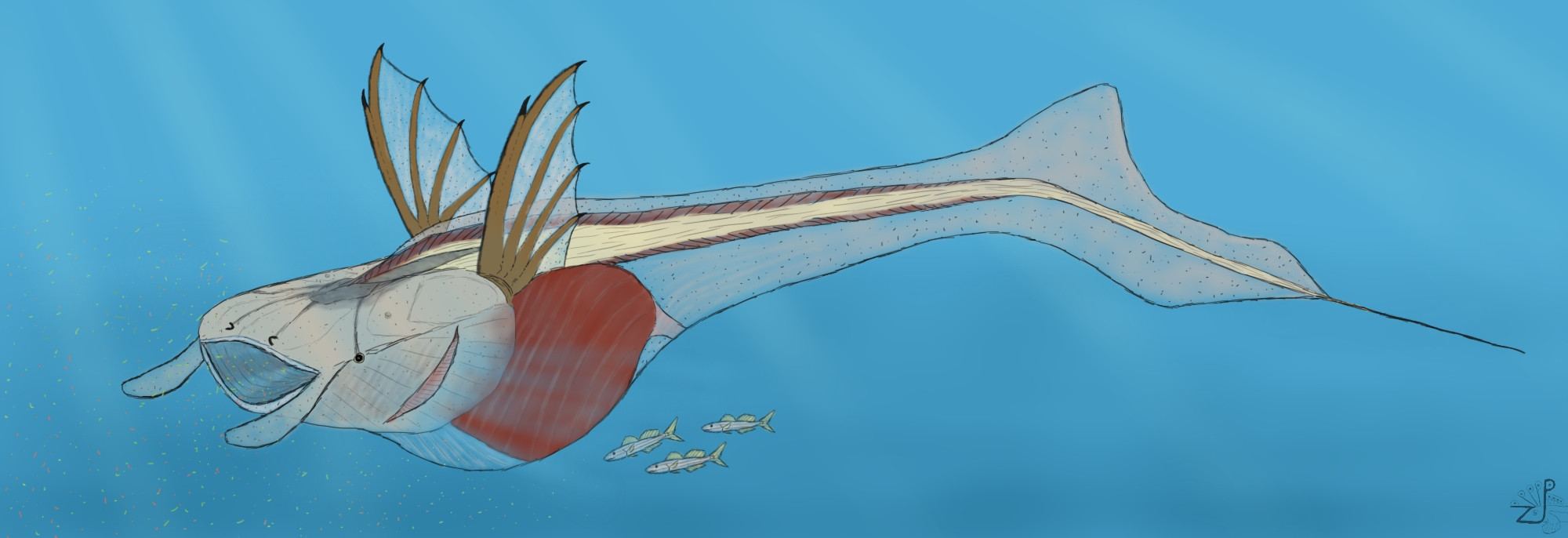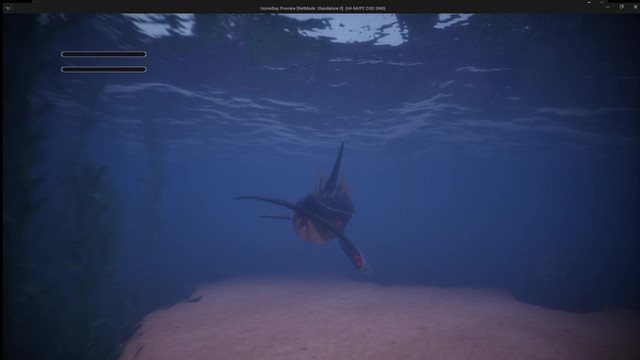HOME | DD
 ZoPteryx — Titanic Tadpole
ZoPteryx — Titanic Tadpole

Published: 2014-04-30 03:20:06 +0000 UTC; Views: 22570; Favourites: 406; Downloads: 42
Redirect to original
Description
It has been 20 million years since Mars was terraformed by sentient being from a neighboring planet, Earth. Those beings have since vanished, but the life they brought with them from their home world persists and has evolved, despite the fact that the planet is slowly stagnating. It appears that they never fully terraformed the planet as it lacks the megafauna characteristic of Earth. Instead, the smaller creatures that were introduced have come to dominate.There is perhaps no better example of this than the Titanic Tadpoles (Xenocetus): massive, paedomorphic, filter-feeding, semitransparent, marine amphibians descended from an ancient Earth species known as the African Clawed Frog (Xenopus laevis). Their tiny filter feeding larvae have since evolved into 20 meter giants that have taken to the brackish Martian oceans to take advantage of their rich planktonic fauna. Whiskers converted into funneling chemoreceptors, enlarged spiracles to filter large volumes of water, hind limb buds modified into fins, and a reversed heterocercal tail for efficient cruising. They are the last remnant of what was a great variety of filter-feeding organisms that proliferated early in the Mars's terraformed history.
...................................................................................................................................................................................................
My entry for the "Earth Life on Mars" monthly contest of the Speculative Evolution Group.
I like this conceptual world, I'd like to dive into it further but I think I've got enough on my plate.
Related content
Comments: 63

True, but their Xenopus ancestors are quite adaptable, and there are few saltwater resistant amphibians currently and in the past.
Your probably right about the transparent skin, pigments add structural support after all. Still, a slow swimmer on a planet with lazy currents and less gravity, who knows...
👍: 0 ⏩: 1

tissue only appears transparent in a very thin layer though, this animal is not thin, transparent amphibians are minuscule, with extremely thin skin and very thin belly musculature, that's why you can see the guts of extremely small amphibians.
I never said pigments add structural integrity, they very much don't, i don't understand where you got this impression from, an albino alligator has pretty much the same structural integrity as a brown-green "normal" alligator, only problem is it can't hide anywhere.
but even with no pigment and the tissues are still thick enough to not make the animal transparent. that's the point. your animal is not a 20 m spaghetti worm, it's a fat girthy fellow, and as such I think it's unrealistic to expect it to be transparent.
even large jellyfish have tissues so thick they are not transparent any more. large animals need proportionally thicker tissues than smaller animals to maintain structural integrity. increase dimensions 2 times, volume grows 8 times.
👍: 0 ⏩: 1

With regards to the structural integrity, melanin improves the tensile strength of structures like scales and feathers, this is why birds often have dark-tipped primary feathers.
But your right, it probably has little significance on an animal of this size and girth. The thought of an overgrown, clear, amphibian-whale was just too tempting. This makes me wonder what colors I should've made it, perhaps simple countershading of gray and with a dappled light gray stomach and sides.
👍: 0 ⏩: 1

WOW! I didn't know melanin improves tensile strength! Thanks for the info! the more you know... 
👍: 0 ⏩: 1

No problem, we all like our creations to be as plausible as possible!
👍: 0 ⏩: 0

Oh my god, you win the internet for this thing. And it's so cute I think I'm going to die. p_p
👍: 0 ⏩: 1

NICE
An amphibian going from Neoteny to becoming the Martian Baleen whale, BRILLIANT! 
I just submitted my entry, wanna see? ponchofirewalker01.deviantart.…
👍: 0 ⏩: 1

Thank you very much! I predicted that Mars would need to be covered in about 80% oceans so that there would be enough precipitation to make the land habitable; as a geologically dead planet, there aren't any freshwater springs, making all life on land dependent on rainfall. Both factors contribute to the oceans' salinity, which I guessed would make them only about half as salty as Earth's oceans.
I like your entry too! You've come up with a very reasonable evolutionary path for those creatures. And I think you went the right route in picking ancestors from tundra-type environments.
👍: 0 ⏩: 1

You're welcome
Hmm, I guess so and there are some amphibians would could able a little salinity, right?
Rely on just rain? Yikes, this is definitely where "dry season" is a VERY bad idea.
Thanks
I got the idea when I've read the article of the Yeti being an ancient polar bear or a polar/brown bear cross AND the White Apes for the John Carter movie and the original books, so it seems to fit nicely
Exactly, I've looked up on documentaries about terraforming Mars and they seem to conclude that Tundra and Alpine species are best for Mars, or species that were altered with alpine/tundra traits
👍: 0 ⏩: 1

Yes, there are a few frog species that live in brackish water, the Crab-eating Frog can survive in total saltwater, and there was group of Triassic temnopsondyl amphibians that were entirely marine.
👍: 0 ⏩: 1
<= Prev |


























